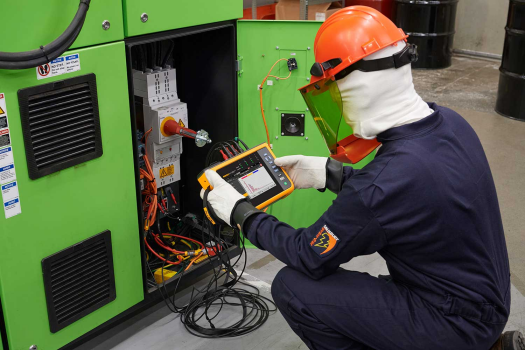Introduction
Power quality is an estimate of how stable the electrical system is, often this is described as “power quality health.” This is measured on three-phase electrical systems using instrumentation that considers several variables. Troubleshooting power quality issues will help your facility save money by optimizing energy use and protect equipment from future damage. The first step to evaluating power quality is to capture data from equipment, infrastructure, and the service panel. The primary effects of poor power quality effects include:
Dips and swells – voltage lower or higher than expected
Harmonics – frequency effects caused either by the power supply or by equipment operating within the system
Unbalance – the effect of voltage or current variations on each of the electrical phases
Flicker – effects caused by repetitive switching of electrical loads such as arc furnaces or other processes
